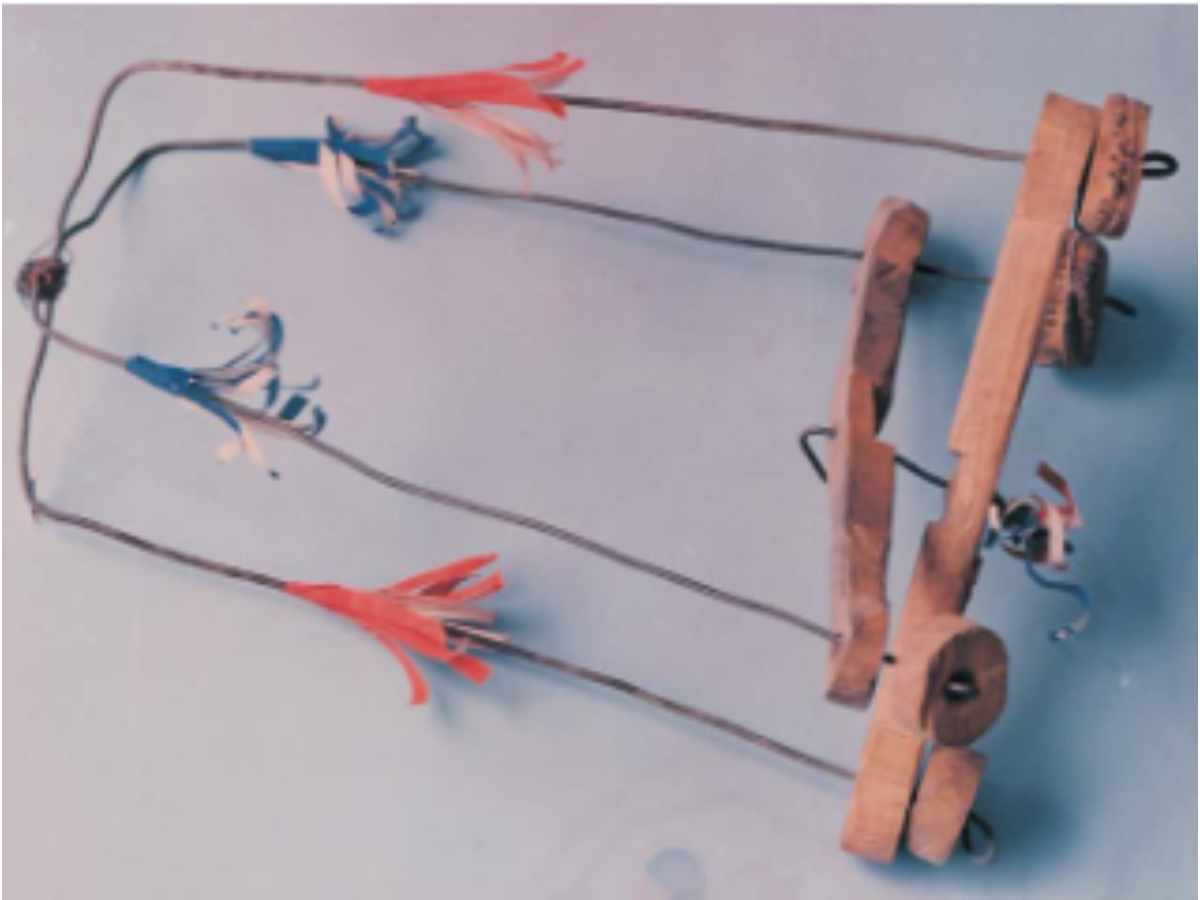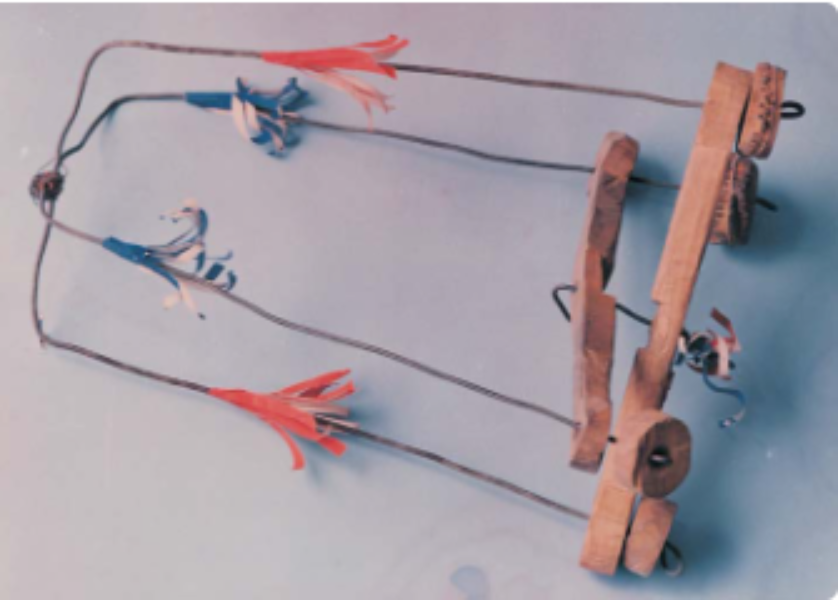State
Tribe Name
Art Type
short description
Pradesh. The instrument mainly consists of two wooden sticks of different lengths that are connected by a thick U-shaped wire. The wooden sticks are rhythmically clapped up and down against each other to produce clapping sounds. The Thiski is played by holding it by the thick wire and Churning it, causing the wooden sticks to strike together, producing a distinct sound thereby creating a rhythm. The Thiski is played mainly during folk dances, festivals, and rituals by tribal groups like Gond and Baiga in Madhya Pradesh. Its simple yet purposeful design brings It to the forefront as an important instrument in the tribal arts, music, and storytelling tradition. Tribal songs and dances are animated and energized during community gatherings under the rhythmic beats of the Thiski.
Thumbnail

Filter Postion
Left
Filter Background
Off
Theme
Filter Header Image

content
Image

description
The Thiski is a traditional form of percussion used by the southeastern tribal communities in Madhya Pradesh. The instrument mainly consists of two wooden sticks of different lengths that are connected by a thick U-shaped wire. The wooden sticks are rhythmically clapped up and down against each other to produce clapping sounds. The Thiski is played by holding it by the thick wire and Churning it, causing the wooden sticks to strike together, producing a distinct sound thereby creating a rhythm. The Thiski is played mainly during folk dances, festivals, and rituals by tribal groups like Gond and Baiga in Madhya Pradesh. Its simple yet purposeful design brings It to the forefront as an important instrument in the tribal arts, music, and storytelling tradition. Tribal songs and dances are animated and energized during community gatherings under the rhythmic beats of the Thiski.
This handmade wooden instrument shows the artistic abilities of the tribes along with their natural affinity to the environment since they use locally sourced wood. The instrument is not popular outside these tribal groups; hence it holds a very significant place among their indigenous musical heritage.
This handmade wooden instrument shows the artistic abilities of the tribes along with their natural affinity to the environment since they use locally sourced wood. The instrument is not popular outside these tribal groups; hence it holds a very significant place among their indigenous musical heritage.
Image Mode
landscape
promoted
On
Verified
Off
